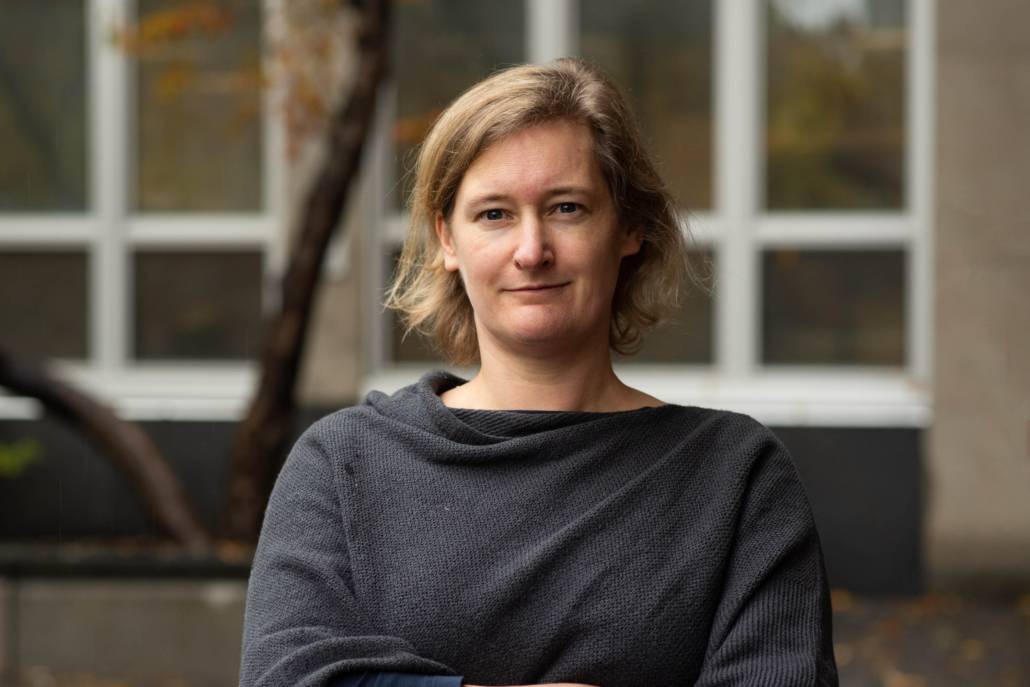Use of laser-induced breakdown spectroscopy for rapid disease screening
The COVID-19 pandemic demonstrated that in such situations there are some simple questions that benefit from fast answers: Who has got the disease; Who has had the disease; and Who remains unexposed. The technique of laser-induced breakdown spectroscopy has the potential to help answer these questions and we caught up with Professor Berlo (McGill University, Montreal, Canada) and Professor Melikechi (University of Massachusetts, Lowell, USA) to find out more about how it can be used in the realm of disease diagnostics.
What is laser-induced breakdown spectroscopy?
Prof. K. Berlo (KB): Laser-induced breakdown spectroscopy (LIBS) is an all-optical multi-elemental analytical spectroscopic method whereby a laser is fired at a sample, which can be a gas, liquid or solid, to create a plasma above the sample. The plasma that forms from the interaction between the laser and the ablated material consists of electrons and excited atoms and ions. When the plasma cools, these excited atoms and ions fall back to their ground state which results in the emission of light with discrete wavelengths according to the composition of the material. The emitted light is collected and send via a fibre optic cable to a charge-coupled device (CCD) detector. The peaks in the spectra are characteristic for the elements in the material and can be identified. LIBS can be used for quantification, but its power lies in material characterization, because it provides a fingerprint of the material. Some of the advantages of LIBS include its ability to be used with minimal or even without sample preparation and to be performed at room temperature and atmospheric pressure or almost any environment.
What role can LIBS play in human health/disease diagnosis?
Prof. N. Melikechi (NM): Accurate, early diagnosis of cancers in their early stages, i.e. way before they undergo metastasis, can contribute significantly to reduce both their human and economic costs. Our aim is to develop liquid biopsy techniques for the detection of a large array of diseases. Our approach is to develop non-invasive, sensitive, specific and accurate analytical tests based on the use of the spectral information that can be obtained from biomedical fluids. Our research group has been working on the application of LIBS for the detection, screening and diagnosis of cancers such epithelial ovarian cancer [1,2] and melanoma [3], as well as of Alzheimer’s disease (AD) [4]. Using blood plasma and powerful machine learning techniques, we have reported discrimination accuracies between the LIBS spectra acquired from the blood plasma of diseased and healthy controls that are encouraging (~ 80%). Similar encouraging results have been obtained, for example for the detection of multiple myeloma in humans [5]. LIBS has been selected for this work because in principle every laser pulse provides a characterization of a sample, and thus many samples can be compared very rapidly leading to large databases. In practice we do average several spectra to enhance the signal-to-noise ratio, but the method is still fast and can be potentially envisaged as a screening tool.
KB: In our most recent study we used bloodspots, but it should be feasible to develop this into using finger-stick samples in a clinical setting to screen for specific diseases. The key is to have a large database of samples that have been tested positive and negative for a specific disease. The larger and more diverse the database, the better we can isolate the differences between them through machine learning methods. Our results reported thus far, although encouraging, have been obtained with limited number of samples. Much more work needs to be done.
How can LIBS be used in the detection of a SARS-CoV-2 immune response and what does the data actually tell us? How do we know that the changes seen are the result of SARS-CoV-2 infection and not another illness?
KB: For this work we have used a similar approach to that developed for cancers and AD [6]. Essentially, the method relies on the use of machine learning, which requires a training set for which the presence or absence of a specific antigen or immune response has been determined through other independent methods. Ideally this approach would include a large number of subjects who will represent the full diversity of the population. Of course, this will and should include subjects with all sorts of diseases, medications, diets and backgrounds. The algorithm will then search for difference between the two groups (positive and negative). If each group has the same diversity in terms of other variables (e.g: age, blood type, disease, diet) then it is possible to extract those features in the spectra that relate only to the difference between positive and negative for the specific disease in this case having has SARS-CoV-2. The data will only tell us what the spectral difference between the two groups is, not what it represents biologically. We believe that this, however, can provide new fingerprints in the form of spectral signatures that could contribute to screening and monitoring the evolution of diseases such as cancers and possibly others.
What are the advantages of using LIBS to detect seroprevalence of SARS-CoV-2?
NM: Our study was a pilot study, but the potential is huge. Ideally, we would like to develop this into a rapid screening method that can be deployed in a clinical setting. That relies on the development of a simpler and cheaper system focused on specific regions of the spectrum where most of the variance is detected as well as the development of an algorithm based on a larger training set. The advantage then is the rapid throughput through the combination of no sample preparation and the fast analysis. With the algorithm in place the required training and operation requirements of the method are minimal.
Is there anything to be aware of when analysing/processing the data and how does machine learning contribute to the data analysis?
KB: LIBS is an elemental technique; it does not identify a specific protein or molecule. A feature that is implicated as being different between positive and negative samples is not an isolated element. For example, we can’t say that Zn is always going to be higher or lower. Rather the involvement of Zn may be a clue for a specific biological response, which will require additional methods to identify. The analysis does, however, yield clues of other elements that are associated with the same biological response. Larger data sets have confirmed a select set of elements that we are currently investigating further.
Aside from being able to determine SARS-CoV-2 immune status, what other information does the LIBS data provide regarding the SARS-CoV-2 response?
KB: LIBS, in combination with machine learning, provides a spectral difference between the plasma of those positive and negative for SARS-Cov-2. This spectrum provides information on the element associations that constitute this difference. Using a relatively small data set, we have compared pre-and early-pandemic blood plasmas. These samples pre-date the availability of vaccines and one research avenue is thus to look at responses after vaccination. The diversity in status with regard to vaccination and the timing of natural infection is likely to complicate the diversity in immune response. Identifying the element associations that characterize these different groups may aid in understanding of the immune response and its evolution in time.
What do you think the future impact of LIBS will be in clinical lab diagnostics?
NM: The advantages of LIBS, rapid analysis and limited sample preparation, render it an attractive method to develop into a screening tool in a clinical environment. It can be set up with an initial data set and machine learning methods whereby each additional externally verified sample can contribute to the data set making the tool more accurate over time as the database grows. By selecting data sets for different diseases, a single instrument can, in theory, be used to screen for multiple diseases simultaneously using the same spectra, but different algorithms.
Prof. Kim Berlo PhD, Department of Earth and Planetary Sciences, GEOTOP Research Centre, McGill University, Montreal, Québec, Canada
Prof. Noureddine Melikechi D. Phil., Department of Physics and Applied Physics, Kennedy College of Sciences, University of Massachusetts, Lowell, MA, USA
The experts
Prof. Kim Berlo PhD, Department of Earth and Planetary Sciences, GEOTOP Research Centre, McGill University, Montreal, Québec, Canada
Email: kim.berlo@mcgill.ca
Prof Noureddine Melikechi D. Phil., Department of Physics and Applied Physics, Kennedy College of Sciences, University of Massachusetts, Lowell, MA, USA
Email: Noureddine_Melikechi@uml.edu
References
- Markushin Y, Sivakumar P, Connolly D, Melikechi N. Tag-femtosecond laser-induced breakdown spectroscopy for the sensitive detection of cancer antigen 125 in blood plasma. Anal Bioanal Chem 2015;407(7):1849–1855 (https://link.springer.com/article/10.1007/s00216-014-8433-0)
- Melikechi N, Markushin Y, Connolly DC et al. Age-specific discrimination of blood plasma samples of healthy and ovarian cancer prone mice using laser-induced breakdown spectroscopy. Spectrochim Acta Part B At Spectrosc 2016;123:33–41 (https://www.sciencedirect.com/science/article/abs/pii/S0584854716301070?via%3Dihub)
- Gaudiuso R, Ewusi-Annan E, Melikechi N et al. Using LIBS to diagnose melanoma in biomedical fluids deposited on solid substrates: Limits of direct spectral analysis and capability of machine learning. Spectrochim Acta Part B At Spectrosc 2018;146:106–114 (https://www.sciencedirect.com/science/article/abs/pii/S0584854718301290?via%3Dihub)
- Gaudiuso R, Ewusi-Annan E, Xia W, Melikechi N. Diagnosis of Alzheimer’s disease using laser-induced breakdown spectroscopy and machine learning. Spectrochim Acta Part B At Spectrosc 2020;171:105931 (https://www.sciencedirect.com/science/article/abs/pii/S0584854720302329?via%3Dihub)
- Chen X, Zhang Y, Li X et al. Diagnosis and staging of multiple myeloma using serum-based laser-induced breakdown spectroscopy combined with machine learning methods. Biomed Opt Express 2021;12(6):3584–3596 (https://opg.optica.org/boe/fulltext.cfm?uri=boe-12-6-3584&id=451276).
- Berlo K, Xia W, Zwillich F et al. Laser induced breakdown spectroscopy for the rapid detection of SARS-CoV-2 immune response in plasma. Sci Rep 2022;12(1):1614 (https://www.nature.com/articles/s41598-022-05509-z).





